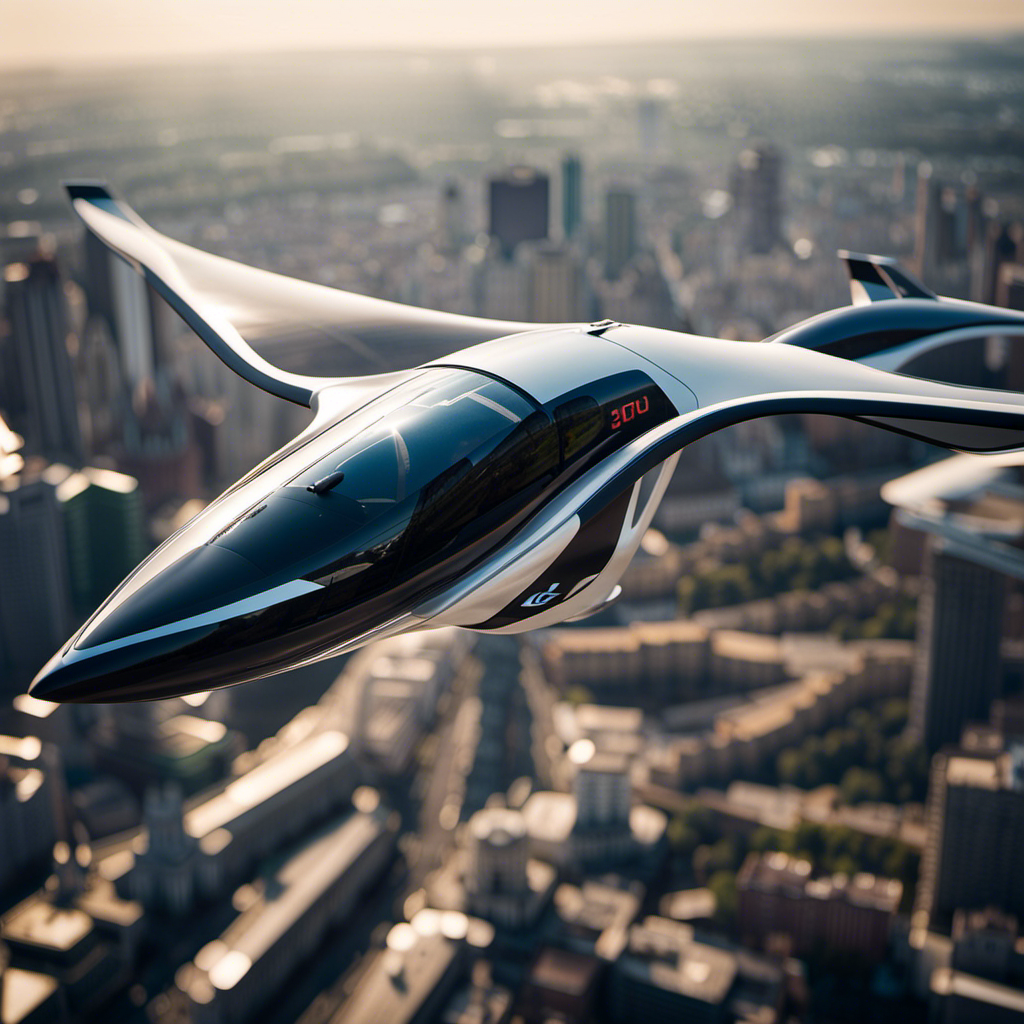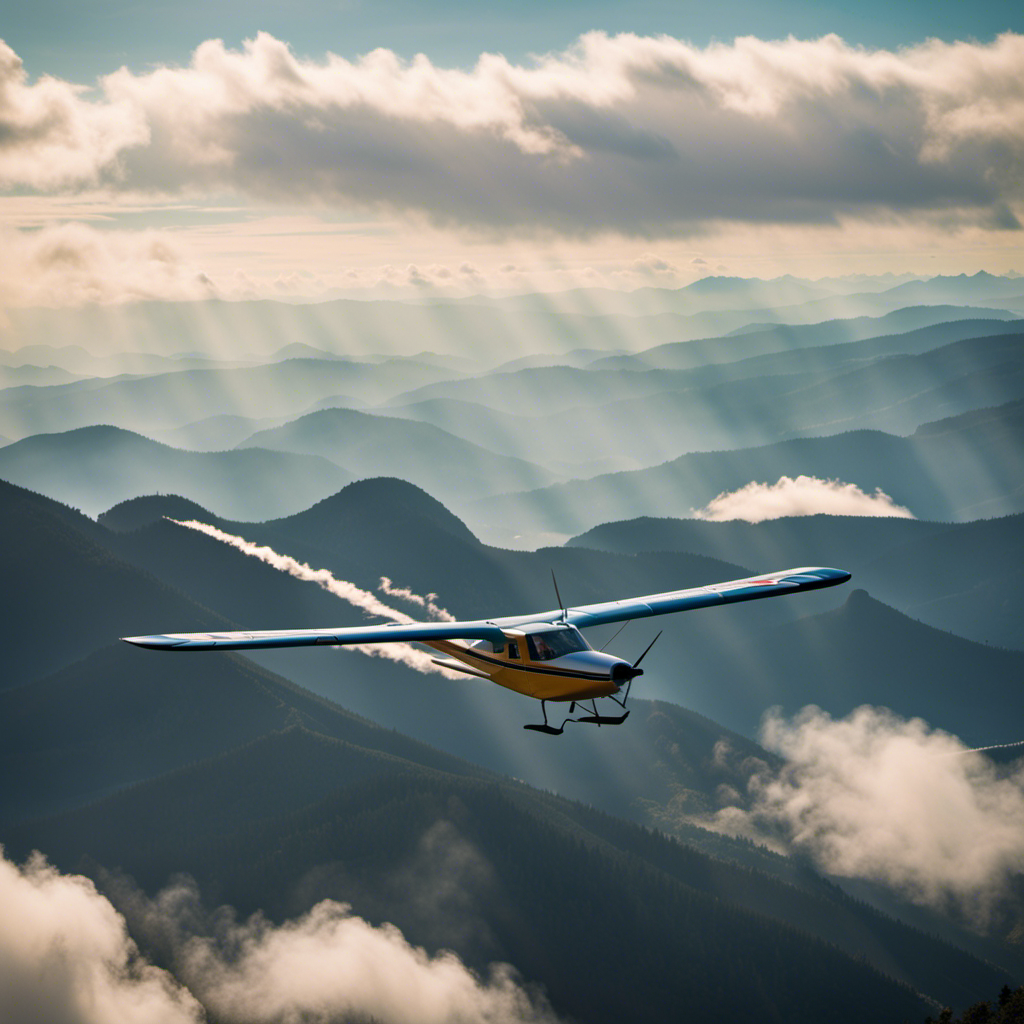I have always been fascinated by the unique traits of sugar gliders. Did you know that these small marsupials are famous for their affectionate nature? Many sugar glider owners wonder if they can cuddle with their furry companions.
In this article, we will explore the fascinating world of sugar glider behavior and learn how to create a safe and comfortable environment for them. We will also discuss the importance of building trust and recognizing signs of affection.
So, let’s dive in and discover the joy of cuddling with a sugar glider!
Key Takeaways
- Sugar gliders are social animals that require regular handling and interaction to prevent stress.
- Building trust and bonding with sugar gliders requires a gentle and patient approach, understanding their body language, and offering treats and gentle interactions.
- Creating a safe and comfortable environment for sugar gliders includes choosing the right cage and accessories, providing plenty of space for climbing and gliding, and maintaining a consistent routine.
- Interactive playtime and activities, such as engaging in interactive toys and games, promoting physical activity, and providing bonding pouches and climbing structures, are important for bonding with sugar gliders.
Understanding Sugar Glider Behavior
Sugar gliders are social animals and they can become stressed if they are not given enough attention. Understanding socialization is key when it comes to interacting with these small marsupials.
It is important to establish a bond with your sugar glider through regular handling and interaction. This will help them become familiar with you and reduce any fear or aggression they may exhibit.
When handling a sugar glider, it is crucial to be gentle and patient. They may display aggression if they feel threatened, so it is important to approach them slowly and calmly. By observing their behavior and body language, you can better understand their needs and preferences.
In the next section, we will discuss creating a safe and comfortable environment for your sugar glider.
Creating a Safe and Comfortable Environment
When it comes to providing a safe and comfortable environment for my sugar glider, there are a few key points to consider.
First, it’s crucial to choose the right cage and accessories. Sugar gliders are active animals that require plenty of space to climb and glide, so a large, multi-level cage with branches, perches, and toys is essential.
Additionally, creating a consistent routine is important for their well-being. Sugar gliders thrive on routine and predictability, so establishing a regular schedule for feeding, playtime, and bonding will help them feel secure and reduce stress.
Providing the right cage and accessories
You should make sure to provide the right cage and accessories for your sugar glider. Understanding sugar glider behavior is key to creating a safe and comfortable environment for your pet.
Here are some important points to consider:
-
Cage size and design:
-
Make sure the cage is large enough for your sugar glider to move and glide around comfortably.
-
Opt for a cage with vertical space, as sugar gliders love to climb and jump.
-
Cage furnishings and accessories:
-
Provide branches, ropes, and hammocks for your sugar glider to climb and play on.
-
Include a nesting box or pouch where your glider can sleep and feel secure.
By providing the right cage and accessories, you are creating a stimulating environment that will keep your sugar glider happy and healthy.
Now, let’s explore how to create a consistent routine for your sugar glider without disrupting their natural behavior.
Creating a consistent routine for your sugar glider
To establish a consistent routine for your pet, it’s important to understand their natural behavior and create a schedule that aligns with their needs.
Sugar gliders have unique behavioral patterns that can be recognized and incorporated into their daily routine. These small marsupials are nocturnal, meaning they are most active at night. Therefore, it is essential to adjust your schedule to accommodate their natural instincts.
Providing a consistent schedule for feeding, playtime, and exercise will help your sugar glider feel secure and comfortable in their environment. By establishing a daily routine, you can ensure that your sugar glider receives the care and attention they need to thrive.
Consistency is key in building trust and a strong bond with your sugar glider, which we will explore in the next section.
Building Trust with Your Sugar Glider
Building trust with your sugar glider is essential for creating a strong bond. Understanding their body language is crucial in establishing trust.
Sugar gliders communicate through a variety of visual cues and behaviors. For instance, they may use their body posture, facial expressions, and vocalizations to express their emotions and needs. By observing and interpreting these signals, you can better understand your sugar glider’s feelings and intentions.
Patience and consistency are key in building trust. Spend quality time with your sugar glider, offering treats and gentle interactions to create positive associations. Allow them to approach you at their own pace and respect their boundaries.
Recognizing Signs of Affection
Recognizing signs of affection in your pet sugar glider can deepen your bond and create a stronger connection between you.
As a responsible sugar glider owner, it is important to understand and interpret their body language accurately.
When your sugar glider feels comfortable and safe in your presence, they may display signs of affection such as grooming behaviors, cuddling, and gentle nibbling.
Grooming is a common way for sugar gliders to show care and affection. They may groom themselves, their cage mates, or even you, gently nuzzling and licking your hand or face.
Cuddling is another sign of affection, where your sugar glider snuggles up against you or seeks warmth in your clothing.
Recognizing these affectionate behaviors will help establish a strong bond with your sugar glider, paving the way for enjoyable interactive playtime together.
Interactive Playtime with Your Sugar Glider
After recognizing the signs of affection from my sugar glider, I was eager to further deepen our bond through interactive playtime. Understanding the bonding process is crucial in creating a strong and trusting relationship with these adorable creatures. Engaging in interactive toys and games not only promotes physical activity but also stimulates their natural instincts.
Here are five interactive activities that I found enjoyable with my sugar glider:
- Hide and Seek: Hiding treats or toys around the room allows them to utilize their excellent sense of smell and encourages exploration.
- Puzzle Toys: Providing puzzle toys with hidden treats inside encourages problem-solving skills and mental stimulation.
- Feather Wand: Swinging a feather wand mimics their instinctive prey drive and provides an opportunity for them to practice agility and coordination.
- Bonding Pouch: Carrying your sugar glider in a bonding pouch close to your body creates a sense of security and strengthens the bond.
- Tunnels and Climbing Structures: Sugar gliders love to climb and explore, so providing tunnels and climbing structures allows them to exercise and satisfy their natural instincts.
By engaging in these interactive playtime activities, you can cultivate a stronger bond with your sugar glider while providing them with mental and physical enrichment.
Transition: Now that we have explored interactive playtime with sugar gliders, it is essential to understand the importance of proper diet and nutrition for their overall well-being.
The Importance of Proper Diet and Nutrition
To ensure your furry friend’s health and vitality, it’s crucial to provide them with a balanced diet and proper nutrition. Sugar gliders have specific dietary needs that must be met to prevent nutritional deficiencies and promote overall well-being.
Meal planning for sugar gliders should include a variety of foods to ensure they receive all the essential nutrients. In addition to their main diet of fruits, vegetables, and protein sources, dietary supplements can be used to fill in any nutritional gaps. Common nutritional deficiencies in sugar gliders include calcium, vitamin D3, and protein deficiencies, which can lead to serious health issues if not addressed.
It’s important to establish a feeding schedule to ensure regular and consistent meals. Transitioning to the next section about health and veterinary care for sugar gliders, it is essential to monitor their diet as part of their overall care plan.
Health and Veterinary Care for Sugar Gliders
One important aspect of caring for sugar gliders is ensuring they receive regular check-ups from a veterinarian. Understanding sugar glider health, common diseases, and preventative care is crucial for their well-being.
Sugar gliders are susceptible to various health issues, including nutritional deficiencies, dental problems, and infections. Regular veterinary check-ups are essential to monitor their overall health and detect any potential issues early on. During these check-ups, the veterinarian will examine the glider’s physical condition, check their weight, assess their dental health, and perform any necessary tests or vaccinations. These regular visits help ensure that any health concerns can be addressed promptly and appropriate treatment can be provided.
By prioritizing regular veterinary care, we can ensure the long-term health and happiness of our sugar gliders.
Moving onto handling and holding your sugar glider, it is important to remember that they require gentle and cautious handling to prevent any injuries or stress.
Handling and Holding Your Sugar Glider
When handling a sugar glider, it’s important to be gentle and cautious to prevent any injuries or stress. These small marsupials have delicate bodies and can easily become frightened or hurt if not handled properly. Understanding bonding and common mistakes can help ensure a positive interaction with your sugar glider.
| Understanding Bonding | Common Mistakes |
|---|---|
| Building trust through regular handling and socializing | Mishandling or gripping too tightly |
| Offering treats as a form of positive reinforcement | Startling the glider with sudden movements or loud noises |
| Allowing the glider to initiate contact and explore at its own pace | Not providing a safe environment for interaction |
Understanding the Limits of Cuddling
As we continue to explore the topic of handling and holding sugar gliders, it is important to understand the limits of cuddling with these adorable creatures. While cuddling can be a wonderful way to bond with your sugar glider, it is essential to respect their boundaries and body language.
Here are some key points to consider when cuddling your sugar glider:
-
Pay attention to their body language: Sugar gliders communicate through various body movements and vocalizations. Understanding their body language will help you gauge their comfort level during cuddling sessions.
-
Establish boundaries: Just like humans, sugar gliders have personal space preferences. It is crucial to establish boundaries and respect their need for space while cuddling.
-
Gradually increase cuddle time: Start with short cuddling sessions and gradually increase the duration as your sugar glider becomes more comfortable.
Building a Strong Bond with Consistency and Patience
Understanding the importance of consistency and patience is key to building a strong bond with these adorable creatures. Sugar gliders are social animals that require trust and familiarity to feel comfortable and safe around humans.
The bonding process with a sugar glider involves gradually gaining their trust through consistent interaction and handling. It is essential to establish a routine and spend quality time with your sugar glider every day to create a sense of security and reliability.
By providing a calm and predictable environment, you can help your sugar glider feel at ease and develop a strong bond with you. Consistency in feeding, handling, and playtime will contribute to building trust and forming a deep connection with your furry friend.
Building a foundation of trust through consistency is crucial for the overall well-being and happiness of your sugar glider. This strong bond will bring many benefits and rewards for both you and your sugar glider, such as increased companionship and the opportunity to engage in fun and interactive activities together.
The Benefits of Bonding with Your Sugar Glider
Creating a strong bond with your sugar glider can lead to increased companionship and the opportunity for fun activities together. Building trust is crucial in the process of bonding with your sugar glider. By consistently spending time with them and providing them with proper care, you can promote socialization and strengthen your relationship.
Sugar gliders are social animals by nature, so they thrive on interaction and companionship. Through regular handling and gentle interactions, you can foster a sense of trust and security with your sugar glider. This trust is essential for them to feel comfortable and safe in your presence.
As your bond grows, you’ll be able to engage in activities such as playing, exploring, and even cuddling. It’s important to remember that each sugar glider is unique, so it’s crucial to be patient and understanding in the bonding process.
Now, let’s explore how to introduce your sugar glider to other pets.
Introducing Your Sugar Glider to Other Pets
Introducing your sugar glider to other pets can be a gradual process that requires careful supervision and patience. It is important to ensure the safety of both your sugar glider and the other pets involved. Before introducing them, it is crucial to consider the temperament and behavior of the pets. Some pets may be more accepting of a new addition, while others may require more time to adjust. To assist with the introduction, I have created a table below outlining safety precautions and tips for a successful introduction:
| Safety Precautions | Tips for a Successful Introduction | Keep in Mind |
|---|---|---|
| Provide separate living spaces initially | Gradually introduce scents and sounds | Each pet’s personality and comfort level |
| Supervise all interactions closely | Allow for short, supervised meetings | The need for patience and observation |
| Gradually increase the duration of interactions | Reward positive behavior and calm interactions | The importance of positive reinforcement |
| Seek professional guidance if needed | Separate pets if aggression occurs | The well-being and safety of all animals involved |
Traveling with Your Sugar Glider
When it comes to traveling with your sugar glider, it’s important to prioritize their safety and comfort. In order to ensure a stress-free journey, there are a few key tips to keep in mind.
Planning ahead for accommodations and supplies is also crucial to provide a suitable environment for your sugar glider during your travels.
Tips for safe and stress-free travel
To ensure a safe and stress-free travel experience, make sure you research and follow the regulations for transporting your sugar glider. Here are some tips for safe transportation and reducing stress for your furry friend:
- Provide a secure and well-ventilated carrier to prevent escape and ensure proper airflow.
- Line the carrier with a soft, absorbent material to keep your sugar glider comfortable and to absorb any accidents.
- Place familiar items, such as a favorite blanket or toy, in the carrier to provide a sense of familiarity and security.
- Keep the carrier in a quiet and temperature-controlled environment to minimize stress and maintain a comfortable temperature.
- Avoid sudden movements or loud noises that can startle your sugar glider during transport.
By following these guidelines, you can help your sugar glider have a safe and stress-free journey.
Now, let’s move on to planning ahead for accommodations and supplies without any interruptions to your travel plans.
Planning ahead for accommodations and supplies
Make sure to research and book accommodations in advance to ensure a comfortable stay during your trip. Planning ahead is crucial for a stress-free travel experience.
Start by setting a budget for your accommodations and decide what type of lodging suits your needs and preferences. Look for online reviews and compare prices to find the best deals. Consider factors like location, amenities, and cancellation policies.
Booking in advance not only saves you money but also guarantees availability, especially during peak travel seasons.
Additionally, don’t forget to plan ahead for supplies you might need during your trip, such as food, toiletries, and any special equipment. By taking the time to plan and budget for your accommodations and supplies, you can enjoy a worry-free trip and focus on the joy of owning a sugar glider.
The Joy of Owning a Sugar Glider
You’ll love the joy of owning a sugar glider and cuddling with them. Sugar gliders are highly social animals that can form strong bonds with their owners. Training and socializing your sugar glider is essential to ensure a happy and healthy relationship.
Start by providing a comfortable and safe environment for your glider, with plenty of space to explore. Introduce yourself slowly and gently, allowing your glider to become familiar with your scent and presence. Gradually build trust through positive reinforcement, using treats and praise.
Spend time bonding with your glider through play and interaction, allowing them to become comfortable with being handled and held. It is important to note that not all sugar gliders will enjoy cuddling, as they are naturally curious and active creatures. However, with patience and consistent training, you may be able to develop a close and loving relationship with your sugar glider.
Transition: Developing a strong bond with your sugar glider through training and socialization is the key to experiencing the love and connection of cuddling with them.
Conclusion: The Love and Connection of Cuddling with Your Sugar Glider
Developing a strong bond with your sugar glider through training and socialization is the key to experiencing the love and connection of cuddling with them.
Building trust is crucial in establishing a positive relationship with your glider. Start by spending time near their cage, talking softly to them, and offering treats. Gradually introduce handling, allowing them to become comfortable with your touch. It is important to recognize their cues and respect their boundaries.
Sugar gliders show affection in various ways, such as grooming you, climbing on you, or snuggling up against your body. Pay attention to their body language, as it can indicate their level of comfort and affection.
Frequently Asked Questions
Can sugar gliders be kept as pets?
Sugar gliders can be kept as pets, but they require a lot of care and attention. Pros include their social nature and entertaining behavior. Cons include their high energy levels and need for a specialized diet. To bond with a sugar glider, spend time with them daily, provide a safe and stimulating environment, and offer treats as positive reinforcement.
How long do sugar gliders live?
Sugar gliders typically live for 10-15 years in the wild. They are social animals that live in tree canopies, using their gliding ability to move between trees. They exhibit unique behaviors and require a specialized habitat to thrive.
What is the average cost of owning a sugar glider?
When considering the average cost of owning a sugar glider, it’s important to weigh the pros and cons. While initial expenses can be high, ongoing costs for food, veterinary care, and habitat maintenance should also be factored in. A cost comparison with other small pets can help determine if a sugar glider is the right choice for you.
Can sugar gliders be trained?
Yes, sugar gliders can be trained using various training methods and behavior modifications. These techniques can help shape their behavior and facilitate positive interactions with humans and other animals.
Do sugar gliders require a special diet?
Sugar gliders have special dietary needs. They require a balanced diet that includes a variety of fruits, vegetables, insects, and a specialized pellet formula. Meeting their nutritional requirements is crucial for their health and well-being.
Conclusion
In conclusion, the love and connection that comes from cuddling with a sugar glider is truly a remarkable experience.
Just like the bond between a parent and child, or a lifelong friendship, the joy of holding a sugar glider close to your heart is something that cannot be easily put into words.
It’s a feeling of warmth, comfort, and pure happiness that can only be understood by those who have experienced it.
So, if you’re considering getting a sugar glider as a pet, know that the cuddles and affection they provide will bring endless joy and fulfillment to your life.









